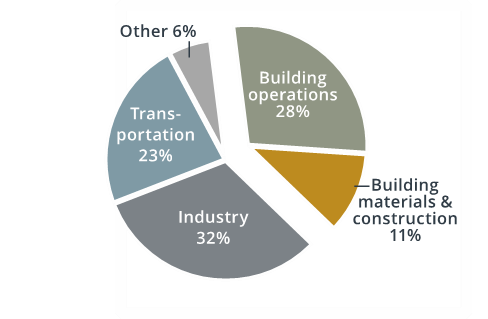According to the United Nations Environment Program, buildings and their construction together generate 36% of global energy use and nearly 40% of global greenhouse gas emissions annually. Given these projections, careful materials’ selection and design can make all the difference.
Incorporating functional façades like curtain walls is a smart approach. Curtain walls have a big impact on energy efficiency, protecting the building and its inhabitants from weather, heat, noise, light and glare. Unsurprisingly they are growing in appeal.




